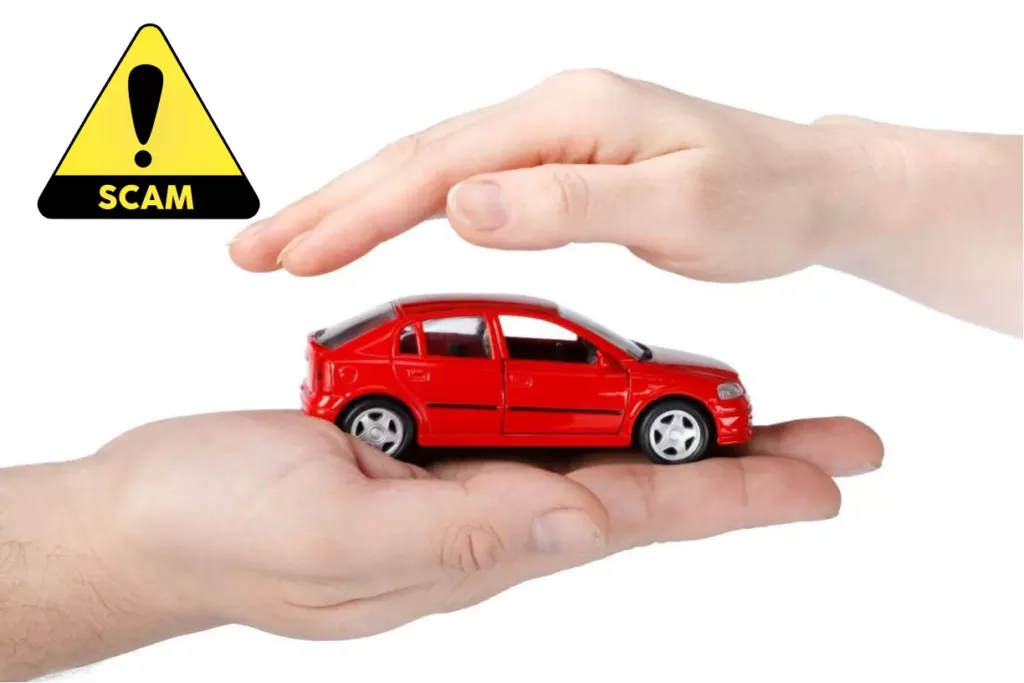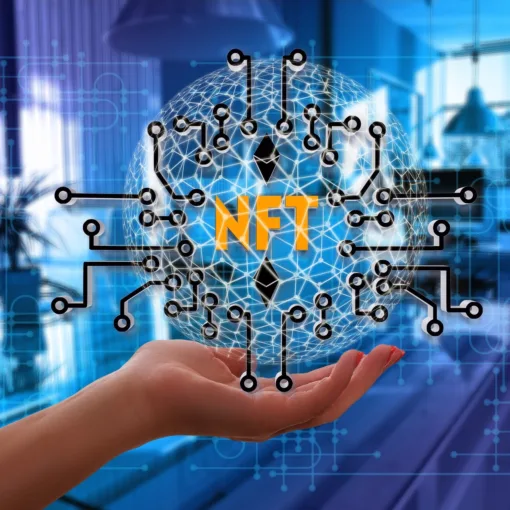
Car insurance frauds have become a significant concern in the automotive industry. Fraudulent activities not only cost insurance companies billions of dollars annually but also drive up insurance premiums for law-abiding policyholders. As a responsible driver, it is essential to be aware of the various car insurance frauds that exist to protect oneself from potential scams and contribute to reducing fraudulent activities in the system.
In United States, there are more than 7,000 insurance companies that collect over $1 trillion premiums each year. The massive size of the industry contributes significantly to the cost of car insurance frauds by providing more opportunities and bigger incentives for committing illegal activities. The total cost of insurance fraud (non-health insurance) is estimated to be more than $40 billion per year. That means Insurance Fraud costs the average U.S. family between $400 and $700 per year in the form of increased premiums.
You can explore statistical details on insurance fraud at FBI Official Website.
In this article, we will delve into the top 20 car insurance frauds that have been plaguing the industry. By understanding these scams in detail, you can better protect yourself from falling victim to such deceitful practices.
Table of Contents
Top 20 Types of Car Insurance Frauds
All types of car insurance frauds explained below are quite interesting to know in the sense they occur and fabricated to avail insurance services.
1. The Phantom Accident Ring
The Phantom Accident Ring car insurance frauds involve the orchestration of accidents that are meticulously planned to deceive insurance companies and exploit their policies. This sophisticated and intricate scheme poses significant challenges to the insurance industry.
Fraudsters behind The Phantom Accident Ring create a complex network of individuals who collaborate to stage accidents that seem genuine but are entirely fraudulent.
The Phantom Accident Ring relies on staged collisions, often involving multiple vehicles, to create a façade of accidents. False injury claims are then filed, escalating the insurance payouts.
Fraudsters recruit fabricated witnesses who provide false statements to support the fraudulent claims. Fictitious vehicles may also be introduced into the staged accidents.
Detecting potential Phantom Accident Ring car insurance frauds requires heightened vigilance. Warning signs include patterns of multiple accidents involving the same individuals or vehicles, consistent injury claims, and conflicting accident details.
Insurers should implement advanced data analysis and investigation techniques, collaborate with law enforcement agencies, and enhance their fraud detection capabilities to prevent falling victim to Phantom Accident Ring frauds.
2. Staged Accidents for Payouts
Staged accidents involve orchestrated collisions where fraudsters purposely cause accidents to claim insurance payouts. They might brake suddenly, causing an innocent driver to rear-end them, or stage accidents in parking lots to make it look like the innocent driver is at fault. These scams not only lead to financial losses for insurance companies but can also result in injuries and trauma for innocent victims making it one of the dangerous car insurance frauds.
3. Fake Injury Claims
In recent years, the prevalence of fake injury claims has surged, leaving insurance companies grappling with a wave of fraudulent attempts. Fraudsters exploit the complexities of insurance systems, making it essential to raise awareness about this disconcerting trend.
Some fraudsters fabricate injuries to extort money from insurance companies. They may even work in collusion with unethical medical professionals who provide false medical reports to support these claims. Fake injury claims contribute to rising insurance premiums and can strain the resources of legitimate claimants.
4. Exaggerated Repair Bills
In this scam, dishonest auto repair shops overcharge for repairs, billing the insurance company for non-existent or exaggerated damages. Policyholders may also collude with repair shops to inflate repair bills for financial gain. This not only costs insurance companies but also undermines the trust between insurers and repair service providers making it one of the unethical car insurance frauds.
5. Policy Fraud: False Information
Individuals involved in policy fraud provide false information when applying for insurance, such as misrepresenting their driving history, vehicle usage, or previous claims. This leads to lower premiums but invalidates their coverage. Policy fraud increases the risk of fraudulent claims and undermines the accuracy of risk assessments.
6. False Address Scams
Some policyholders use fake addresses in low-premium areas to save on insurance costs. This practice, known as “false address scams,” is illegal and can lead to denied claims if the insurance company discovers the deception. Such fraudulent activities contribute to the overall cost of insurance and impact honest policyholders.
7. Car Dumping for Insurance Money
In this scheme, individuals abandon their vehicles in secluded areas and report them stolen to claim insurance money. Insurance companies then end up paying for the “stolen” vehicle, which has, in reality, been dumped intentionally. Car dumping not only defrauds insurance companies but also increases the burden on other policyholders.
8. The Paper Accident Trick
In these type of car insurance frauds, scammers use old or pre-existing damages to their cars as evidence of a recent accident. They then file a claim with the insurance company for the same damages, trying to get compensated for the previous incident. This crafty approach can deceive even the most vigilant insurance adjusters.
9. Swoop and Squat Scheme
The swoop and squat scheme involves two vehicles working together to force an innocent driver into a rear-end collision. One vehicle cuts off the other, causing the innocent driver to rear-end the lead vehicle, leading to insurance claims. This type of staged accident is challenging to prove and often results in unjust payouts.
10. Tow Truck Kickback
In these types of car insurance frauds, fraudsters are known to monitor accident-prone areas, eagerly waiting for collisions to occur. When an accident takes place, they swoop in swiftly, presenting themselves as saviors while exploiting the vulnerable emotional state of accident victims.
Once on the scene, these fraudulent tow truck drivers recommend specific auto repair shops, often claiming to have affiliations with them. Desperate and disoriented, accident victims may agree to these referrals without realizing the ulterior motives at play.
Behind the scenes, a sinister kickback system comes into play. The referred repair shops provide a percentage of the insurance payout to the tow truck drivers for steering business their way. This unscrupulous arrangement results in inflated repair bills and unnecessary work, ultimately driving up the cost of insurance claims.
To avoid falling prey to this fraud, consider obtaining roadside assistance coverage, researching reputable tow truck companies and repair shops, and being cautious of aggressive or insistent towing offers.
11. Rent-a-Crash Scheme
The Rent-a-Crash scheme is a disturbing trend in car insurance frauds, involving intentional and orchestrated accidents designed to deceive insurance companies. Fraudsters exploit these accidents to file bogus insurance claims and reap financial benefits.
Perpetrators of Rent-a-Crash fraud meticulously plan and stage accidents that appear legitimate to an untrained eye. They choose high-traffic areas and times, making it difficult for witnesses to discern the scam.
In some cases, fraudsters employ false witnesses who provide dishonest accounts of the accident. Additionally, fabricated injuries are a common tactic, with fraudsters seeking medical treatment for injuries that never occurred.
Following the staged accident, fraudsters quickly file insurance claims, often exaggerating damages and injuries. These inflated claims lead to higher payouts from insurance companies.
Rent-a-Crash schemes typically involve a network of individuals, including the staged accident participants, fake witnesses, medical professionals, and sometimes even corrupt insurance agents.
To protect oneself from Rent-a-Crash fraud, individuals should maintain safe driving practices, install dash cams for evidence, and always report accidents promptly to law enforcement and insurance providers.
12. Owner Give-Up Fraud : Interesting Type of Car Insurance Frauds
Owner Give-Up fraud involves policyholders intentionally surrendering their vehicles to fraudsters, who then manipulate the situation to file false insurance claims. This scheme targets both the insurance company’s trust and financial resources.
In these type of car insurance frauds, fraudsters convince policyholders to willingly hand over their vehicles, often by promising to alleviate financial burdens. Once in possession of the vehicle, the fraudsters engineer a scenario that allows them to file inflated insurance claims.
To make their fraudulent claims appear legitimate, fraudsters orchestrate staged thefts or disappearances of the surrendered vehicles. This involves strategic planning and execution to avoid raising suspicions.
With the stolen or missing vehicle as leverage, fraudsters file insurance claims, often exaggerating the losses incurred. These inflated claims lead to higher insurance payouts, draining the resources of insurance companies.
Owner Give-Up fraud often involves a network of collaborators, including policyholders, fraudsters, mechanics, and even appraisers who all play a role in fabricating the details of the claim.
To protect against Owner Give-Up fraud, policyholders should thoroughly vet potential buyers or takers of their vehicles, maintain detailed records, and promptly report any discrepancies to their insurance company.
13. Fraudulent Ghost Broker
Another type of car insurance frauds is Fraudulent Ghost Broker. Ghost brokers are con artists who pose as legitimate insurance brokers, selling fake policies to unsuspecting customers. Victims only realize they have no coverage when they need to make a claim, and this leaves them vulnerable and without financial protection.
14. Double-Dipping Scam
The Double-Dipping Scam is a devious form of car insurance frauds, where unscrupulous individuals attempt to exploit both the insurance company and the policyholder, seeking to profit unfairly from a single insurance claim.
In the Double-Dipping Scam, fraudsters try to maximize their gains by duplicitously submitting multiple claims for the same incident. They bank on the hope that their actions will go unnoticed, allowing them to pocket money they aren’t entitled to.
Perpetrators often stage incidents that can appear genuine at first glance, allowing them to file both a first-party claim with their own insurer and a third-party claim with another involved party’s insurer.
Fraudsters may exaggerate damages or even invent fictitious repair expenses, aiming to increase their claim amounts and gain more money from both insurers.
Double-Dipping Scams may involve a network of complicit individuals, including mechanics, witnesses, or even other parties involved in the incident, all working together to deceive insurers.
Being vigilant is crucial in spotting potential Double-Dipping Scams. Some warning signs include unusually high claim amounts, repetitive claims for similar incidents, and questionable details surrounding the incident.
Insurers and policyholders can take proactive steps to prevent falling victim to Double-Dipping Scams. This includes thorough investigation of claims, maintaining accurate records, and implementing anti-fraud measures.
Several real-life cases of Double-Dipping Scams have come to light, underlining the necessity for heightened awareness and vigilance within the insurance industry.
Law enforcement agencies are taking strong actions against Double-Dipping Scams. Those found guilty may face severe legal repercussions, including fines and imprisonment.
If you suspect you’ve encountered a Double-Dipping Scam or have information about one, it’s crucial to report it to relevant authorities and insurers. By taking action, you contribute to curbing the prevalence of this fraudulent practice.
15. Phantom Policyholder Fraud
The Phantom Policyholder car insurance frauds involve the fabrication of non-existent policyholders to file fraudulent claims with insurance companies. This elaborate deception seeks to exploit insurers for financial gain.
Fraudsters create phantom policyholders by generating false identities and fictitious insurance policies. These fabricated policyholders are then used to file claims that appear legitimate at first glance.
Phantom policyholders are often associated with staged accidents or intentionally caused collisions. Fraudsters use these incidents to file false claims, including inflated damages and fabricated injuries.
Phantom Policyholder fraud may involve a network of collaborators, including individuals who stage accidents, provide false witness accounts, and even healthcare professionals who issue fraudulent medical reports.
To protect against Phantom Policyholder fraud, insurers should implement rigorous identity verification processes, closely examine accident details, and scrutinize claim patterns.
16. Airbag Fraud
Airbag fraud involves tampering with airbags or installing counterfeit airbags to make insurance claims for replacements. This not only defrauds the insurer but also puts lives at risk, as counterfeit airbags may not deploy correctly in an actual accident.
17. The Flooding Con
Scammers buy vehicles that have been previously damaged by flooding, fix them superficially, and then claim insurance payouts for comprehensive damages, which often far exceed the actual repair costs. This type of fraud leads to inflated insurance claims and losses for insurers.
18. Vehicle Arson for Payout
Vehicle Arson for Payout car insurance frauds have a disturbing scheme where individuals deliberately set their vehicles on fire to cash in on insurance claims. This dangerous deception not only endangers lives but also puts insurers at risk of substantial financial losses.
In the Vehicle Arson for Payout scheme, fraudsters intentionally cause fires to their own vehicles, aiming to reap insurance payouts far exceeding the value of the destroyed car.
Perpetrators take care to stage the crime scene to appear as accidents or natural fires, masking their malicious intent to defraud insurance companies.
After the vehicle is destroyed, fraudsters file insurance claims, often exaggerating the damages and losses to maximize their potential payout.
Insurers should implement robust investigation procedures, including fire forensics, to verify the cause of vehicle fires and prevent falling victim to Arson for Payout fraud.
19. Rate Evasion
Rate Evasion car insurance frauds involve the deliberate manipulation of insurance premiums by misrepresenting or concealing information. This deceptive scheme undermines the fairness and integrity of the insurance system.
Fraudsters engage in Rate Evasion by purposefully providing false or incomplete information during the insurance application process, aiming to secure lower premiums than they should rightfully pay.
Rate Evasion involves concealing critical information, such as a driver’s history of accidents or traffic violations, to inaccurately lower the calculated premium.
Fraudsters may also underreport the mileage they drive or misrepresent the primary use of the vehicle, such as stating it’s for personal use when it’s primarily for business.
Rate Evasion can also involve collusion with insurance agents, where applicants and agents work together to submit fraudulent applications with inaccurate information.
Insurers can implement stringent verification processes, conduct periodic audits of policyholder information, and invest in technology to detect potential cases of Rate Evasion.
20. Fraudulent Hit-and-Run Claims
In fraudulent hit-and-run claims, individuals purposefully damage their own vehicles and then claim that another driver hit them and fled the scene. This type of scam is challenging for insurers to investigate, as it relies on the absence of witnesses.
There have been many infamous insurance fraud cases highlighted in the media. You can explore top 10 Notorious Insurance Fraud Cases highlighted in the history of mankind.
Conclusion
Car insurance frauds are serious issues that impact not only insurance companies but also honest policyholders. By familiarizing yourself with the top 20 car insurance frauds, you can become more vigilant and protect yourself from falling victim to such deceitful practices. Remember always to provide honest and accurate information when applying for insurance and be proactive in reporting any suspicious activities to your insurance provider. You can explore each and every detail on Auto Insurance Scams & How to Stay Safe in our articles.
FAQs
- What should I do if I suspect someone is committing car insurance frauds? If you suspect car insurance frauds, report it to the insurance company or the National Insurance Crime Bureau (NICB) as soon as possible.
- What is a ghost broker? A ghost broker is a scammer who poses as a legitimate insurance broker, selling fake insurance policies. Always verify the credentials of any insurance agent or broker before purchasing a policy.
- Are ghost brokers easy to identify? Ghost brokers can be challenging to identify as they often operate online and use deceptive tactics to appear legitimate. Always verify the broker’s credentials and check if they are registered with the relevant authorities.
- Can I face legal consequences if my identity is stolen for car insurance frauds? If your identity is stolen for car insurance frauds, you might face legal consequences if authorities believe you were involved in the fraudulent activities. It’s crucial to report the theft immediately to clear your name.
- How can I ensure that my claim is legitimate and not considered fraud? Always provide accurate information in your insurance claim, back it up with evidence, and report only genuine damages and losses.
- Is car insurance fraud a victimless crime? No, car insurance frauds affect everyone involved. It increases insurance premiums for all policyholders and puts innocent drivers at risk of being involved in staged accidents or other fraudulent schemes.
- How does rate evasion impact honest policyholders? Rate evasion leads to lower premiums for the fraudsters, but honest policyholders may end up paying higher premiums to compensate for the losses incurred by the insurer.



